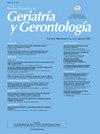Desigualdad territorial en el acceso a los cuidados residenciales para los mayores en España
Q3 Medicine
引用次数: 0
Abstract
Background and Objective
Spain has a shortage of beds in care homes for the aged, although this does not affect all territories equally. The aim of the study was to identify geographical areas of supply and demand imbalance using ad-hoc created units of analysis.
Materials and Methods
Through road network analysis, using basic health areas as a starting point, the national territory was divided into 668 units. The rate of residential beds per person over 85 years old in each unit was calculated. A minimum of 0.2 was considered adequate.
Results
Five thousand five hundred sixty-seven care homes, 393,403 beds, and 1,600,700 people over 85 years old were identified. Spatial availability analysis showed two groups of autonomous communities: those where the majority of the aged population resided in units with adequate supply (Madrid, Basque Country, Cantabria, Catalonia, Castile and León, Navarre, La Rioja, Aragon, Extremadura, Castile-La Mancha, and Asturias) and those where the majority resided in units with inadequate or no supply (Andalusia, Balearic Islands, Galicia, Region of Murcia, Valencian Community, and Canary Islands).
Conclusions
Availability in homes for the aged in Spain in 2023 presented a concerning situation in its territorial distribution, with a notable deficit in the island communities, the Mediterranean coast (except Catalonia), and Galicia. Spatial analysis is a useful tool for planning health and social resources, as it identifies areas of supply and demand imbalance.
西班牙老年人在获得住宅护理方面的地域不平等
背景和目的西班牙老年人护理中心床位短缺,尽管这并不是平等地影响到所有地区。这项研究的目的是使用特别创建的分析单元来确定供需不平衡的地理区域。材料与方法通过路网分析,以基本卫生区为切入点,将全国版图划分为668个单位。计算各单位每85岁以上老人的居住床位比率。至少0.2被认为是足够的。结果共发现养老院55667家,床位393403张,85岁以上老人160.700人。空间可用性分析显示了两组自治区:大多数老年人口居住在供应充足的单位(马德里、巴斯克地区、坎塔布里亚、加泰罗尼亚、卡斯蒂利亚和León、纳瓦拉、拉里奥哈、阿拉贡、埃斯特雷马杜拉、卡斯蒂利亚-拉曼恰和阿斯图里亚斯)和大多数老年人居住在供应不足或没有供应的单位(安达卢西亚、巴利阿里群岛、加利西亚、穆尔西亚地区、瓦伦西亚社区和加那利群岛)。结论2023年西班牙养老院的可用性在地域分布上呈现出令人担忧的状况,在岛屿社区、地中海沿岸(加泰罗尼亚除外)和加利西亚明显不足。空间分析是规划卫生和社会资源的有用工具,因为它确定了供需不平衡的领域。
本文章由计算机程序翻译,如有差异,请以英文原文为准。
求助全文
约1分钟内获得全文
求助全文
来源期刊

Revista Espanola de Geriatria y Gerontologia
Medicine-Medicine (miscellaneous)
CiteScore
1.90
自引率
0.00%
发文量
62
审稿时长
85 days
期刊介绍:
Una revista de gran prestigio por sus artículos originales de investigación y revisiones. Permite cubrir todas las áreas de la medicina pero siempre desde la atención al paciente anciano, y está presente en los más reconocidos índices internacionales.
 求助内容:
求助内容: 应助结果提醒方式:
应助结果提醒方式:


